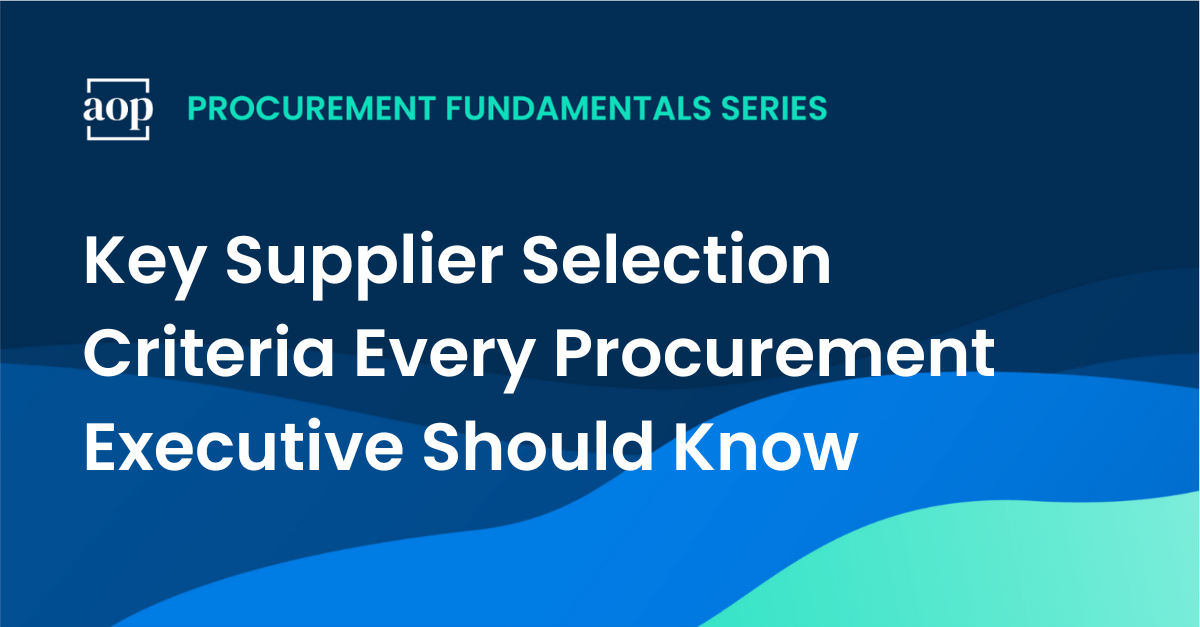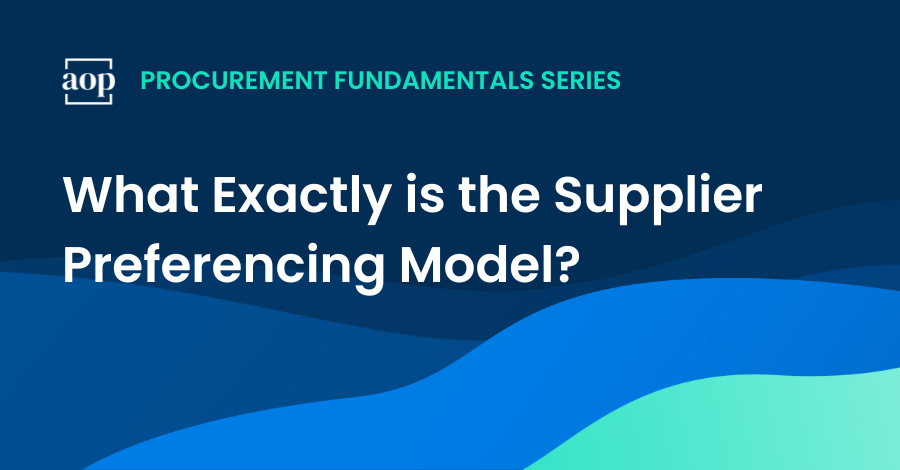6 min read
Beyond Supplier Agreements: How to Maximize Value After a Contract is Signed
Philip Ideson : April 22, 2025

In the world of strategic sourcing, the contract signature often feels like the finish line. Months of preparation, stakeholder coordination, supplier negotiations, and legal reviews culminate in a supplier agreement ready for execution. But, as any experienced procurement leader will tell you, this moment is not the end — it’s just the beginning.
A signed purchase agreement doesn't guarantee results. It’s a framework. It represents a legally binding set of promises and assumptions that still need to be brought to life through action. The real value of a contract comes not from the ink, but from what happens after it dries.
What exactly is a supplier agreement?
A supplier agreement, also known as a purchase agreement or supplier contract, is a legally binding document that outlines the terms and conditions under which a supplier provides goods or services to a buyer.
Supplier agreements typically include:
- Scope of supply or services
- Pricing and payment terms
- Performance expectations and service levels
- Governing law and dispute resolution
- Intellectual property and confidentiality clauses
- Force majeure and termination conditions
These contracts are the foundation of the business relationship — and when managed well, they become strategic tools that drive savings, mitigate risk, and enhance supplier performance.
But a contract’s potential is only unlocked when its terms are actively implemented and enforced.
How supplier agreements fit into strategic sourcing
Step 7 of my strategic sourcing process, Implement Agreements, is where negotiated outcomes must turn into operational reality. It’s where payment terms need to be enforced, contract terms must be monitored, and performance metrics get tracked against actual supplier behavior. Yet, it’s also the step most likely to be rushed, skipped, or handed off too early.

Let’s explore what it takes to move beyond the contract. Based on my two decades of experience as a practitioner and consultant, we break down how procurement teams can stay involved after contract signing, avoid value leakage, and establish processes to ensure the benefits negotiated in the contract are actually realized on the ground.
Why supplier agreements are only the beginning
A well-structured supplier agreement may feel like a milestone, but it’s not an endpoint. Too often, procurement teams hand off the contract to the business or operations once it’s signed, assuming that the terms will take care of themselves.
Suppliers are smart. Suppliers know how to increase their spend. They know all the tricks. If they’re not being watched, you may lose much of the value you negotiated. Without an implementation plan in place, organizations risk losing up to half of the savings they expected to capture.
Whether it’s scope creep, poor communication, or unclear performance expectations, the post-contract phase is full of traps that can erode value — especially if no one is monitoring supplier delivery against the terms of the agreement.
Key steps to implementing supplier agreements
Step 7 in my sourcing process isn’t just about administrative follow-through. It’s a coordinated effort to make sure the contract terms become a reality. This involves three critical actions:
- Executing the contract and integrating it into the organization's contract management system.
- Validating baseline spend, so procurement can later measure real savings and supplier performance.
- Finalizing an implementation plan, including communications, stakeholder onboarding, and supplier alignment.
Without a clear process to follow, even the best-negotiated supply agreements risk underperformance or worse, a complete failure to launch.
How procurement can add value post-signature
Procurement’s job isn’t over after the purchase agreement. In an ideal world you’re a key member of the implementation project team beyond contract signature. You stay involved and serve as an advisor through the process. But many procurement teams don’t have the structure or resources to remain engaged after signing.
Even so, there are meaningful ways to contribute:
- Host a kickoff meeting with stakeholders and supplier representatives to align on deliverables, timelines, and expectations.
Set calendar reminders to check in during key implementation milestones. A short email or call can go a long way. - Offer support if issues arise. Your presence reinforces accountability and strengthens relationships.
These simple measures show you care and help you build rapport with stakeholders for the next time you work with them.
Key priority: establish a spend baseline
Before you can evaluate supplier performance or savings, you need a clear picture of where you’re starting from. That’s where baseline spend comes in.
Here are some reliable sources for baseline data:
- Spend analysis platforms (for organizations that have invested in digital tools)
- Purchase order and invoice records from accounts payable or finance
- Historical consumption data from the supplier themselves
The key is to gather and agree on this data before implementation begins. Without it, procurement and stakeholders have no yardstick for measuring the contract’s success or tracking compliance with contract terms such as pricing tiers, volume discounts, or payment terms.
Why tracking savings is harder than forecasting them
If tracking baseline spend is the easy part, tracking savings is the opposite.
Many procurement teams don’t track post-contract savings at all, not because they don’t want to, but because it’s often too resource-intensive. I’ve seen many times that post-contract savings are not really tracked. They’re extrapolated on estimated or potentially contracted demand.
This works reasonably well for direct materials, where you can track actual usage through an ERP or demand planning system. But with indirect services, things get messy. You’d need to:
- Analyze line-level invoice data
- Map items back to prior and new pricing
- Manually calculate the delta to determine actual savings
All of that adds up to a significant administrative burden, one that many procurement teams are simply not equipped to handle.
Consider sourcing savings governance programs
Given how difficult it is to track actual savings manually, many leading organizations turn to sourcing savings governance programs. These are structured processes designed to ensure savings projections made during sourcing are realistic, defensible, and aligned with stakeholders, especially finance.
Best practice is to agree on how you’ll calculate savings before you even start the sourcing process. That way, when you're done, it’s just a numbers calculation — not a debate.
A strong governance program typically includes:
- Pre-agreed savings methodologies (e.g., price-to-price, cost avoidance, volume-based calculations)
- Cross-functional alignment between procurement, finance (often FP&A), and the business stakeholder
- Approval checkpoints at both sourcing initiation and contract finalization
This ensures that savings are forecasted with credibility and reported with consistency. It also minimizes disputes over what can or can’t be claimed as savings once the implementation is complete. It’s not about arguing over numbers after the fact. It’s about agreeing up front so there are no surprises.
Keep in mind legal and operational considerations
Beyond savings and spend tracking, supplier agreements often contain complex legal and operational terms that directly impact implementation success. Ignoring or mismanaging these contract elements can lead to serious risks, disputes, or unexpected costs. Below are some of the most critical areas to monitor:
Importance of governing law in global supply agreements
For multinational companies, contracts are frequently executed across different jurisdictions. Each contract must clearly define the governing law — the legal system that will be used to interpret and enforce the agreement.
- Is the contract governed by U.S., UK, EU, or local laws?
- What jurisdiction handles potential disputes?
- How are cross-border compliance requirements handled?
Getting this wrong can lead to confusion, increased litigation risk, and extended dispute resolution timelines. Make sure legal counsel is involved in aligning governing law provisions with your organization’s risk profile and supplier geography.
Embedding contract terms into procurement workflows
Procurement doesn’t operate in a vacuum. Contract terms like service levels, reporting frequency, or escalation paths must be embedded into daily workflows to avoid being forgotten or ignored.
Practical steps to operationalize these terms include:
- Create internal playbooks or checklists aligned to the supplier contract
- Input key milestones and KPIs into supplier management tools
- Hold quarterly business reviews (QBRs) tied to contractual commitments
This helps ensure that supplier performance aligns not just with expectations — but with what’s actually written into the contract.
Build a culture of post-contract accountability
Strong supplier relationships and cost savings don’t come from contracts alone — they come from accountability after the contract is signed. That means setting expectations, measuring outcomes, and staying engaged long after the sourcing cycle ends.
Procurement leaders can champion a culture of post-contract accountability by:
- Encouraging cross-functional ownership of contract outcomes
- Aligning with stakeholders on performance metrics and reporting cadence
- Embedding procurement in governance structures, such as quarterly reviews or steering committees
This mindset shift — from tactical contract creation to strategic value delivery — is what separates procurement teams that chase savings from those that consistently realize them.
Ongoing engagement strengthen supplier agreements
It’s good to remember implementation isn’t a one-time event. It’s a continuum that often spans years. Suppliers evolve, business needs shift, and new risks emerge. Maintaining active engagement helps procurement stay ahead of the curve.
Regular engagement can include:
- Touchpoints with the supplier account manager to review issues and flag concerns early
- Performance reviews tied to SLAs, KPIs, and contract milestones
- Commercial check-ins to assess pricing integrity, contract utilization, and potential upsells
Ultimately, procurement builds credibility when we show up after the contract is signed. That’s when stakeholders really start to see us as strategic partners.
How to manage scope creep and avoid value leakage
One of the most common sources of value erosion post-contract is scope creep: when suppliers begin delivering services outside of the agreed terms, or upselling add-ons without proper approvals.
To mitigate this:
- Monitor contract utilization through regular reporting
- Compare invoices to original contract templates and pricing schedules
- Reiterate key contract terms during supplier reviews
When procurement disappears after signing, suppliers may exploit that silence. But when procurement stays engaged, it ensures both parties stay true to the original agreement.
Bottom line on maximizing value beyond the contract signature
If you’re serious about delivering on the full value of your supplier agreements, don’t stop at the signature. The hard work of implementation is where value is won or lost.
Whether you’re implementing supply agreements for direct materials, complex services contracts, or multi-region purchase agreements, remember:
- Stay involved. Even periodic check-ins build trust and transparency.
- Validate your data. Without baseline spend, savings can’t be proven.
- Govern your numbers. Collaborate with finance and stakeholders to lock in agreed savings methodologies.
- Operationalize the contract. Make sure your terms live inside systems, reviews, and day-to-day workflows.
Procurement doesn’t need to own every part of implementation. But it does need to lead where it counts. When procurement follows through, most often supplier performance improves, stakeholder trust deepens, and the business wins. That’s how you maximize value beyond agreements.
Revisit my seven steps of strategic sourcing process:
- How to Start a Strategic Sourcing Process (with My Proven 7-Step Plan)
- How to Create a Category Profile for Strategic Sourcing
- Top Sourcing Strategy Tips from My 7 Step Strategic Sourcing Plan
- Key Supplier Selection Criteria Every Procurement Executive Should Know
- Auctions in Procurement: My Proven Way to Conduct RFx Events in Strategic Sourcing
- Tips for Successful Supplier Negotiations in Strategic Sourcing






